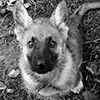5 Things You Must Know About Camera Aperture
Last Updated :Aperture is one of the three main elements in a camera which determines how light will hit the sensors. In simpler words, Aperture is the hole in your lens through which light enters a camera.
So you need not be Einstein or Newton to understand some basics related to aperture. So larger the aperture, more light would enter. Aperture values are given in incremental F stops, like f1/1.4 up to f1/64 The F stop is related to the diameter of the hole though which light comes through.
1. Aperture controls the depth of field in an image. You click a picture where the subject in focus is sharp while the background is blurry and not so clear – that is called depth of field. Larger aperture means a shallow depth of field in your images, while a narrow aperture means a wider depth of field.
2. Your camera enables you to take pictures in crop mode? Great! But remember, cropping causes decrease in depth of field. This is where large mega-pixels can be helpful. You can take a high resolution photo and crop it to increase the apparent DoF.
3. You will notice that once you clamp down the diaphragm to create a small aperture, the resulting picture is a little on the softer side. Ever wonder why that happens? Its because of diffraction – bending of light rays. The smaller the aperture, the lesser the light rays entering the hole, and more are the chances of those rays bending.
4. If the aperture of your camera is wide open, then there is a chance that sharpness might get compromised. So try to use a narrower aperture setting, but only till the point where you feel that diffraction is not taking over. This will ensure sharper pictures. But how do you check if the aperture is optimum and image is at its sharpest? Here’s the trick – mount your camera on the tripod and focus on your subject. Then examine the images at 100% on camera’s display screen to find the image that shows the subject sharpest and check the EXIF data to find which aperture was used. This is your camera lens’s optimum aperture.
5. Bokeh,a Japanese word meaning blur, is a distant relative of aperture. In photography this term is used to describe the quality of those areas in an image which are not in focus. Many photographers go by the thumb rule about aperture and bokeh -- bigger apertures create smoother bokehs.
Backup & Transfer your Photos in Minutes
Automate backup & migration of your photos & videos with support for all top services.
Trusted by users in 125+ countries.









